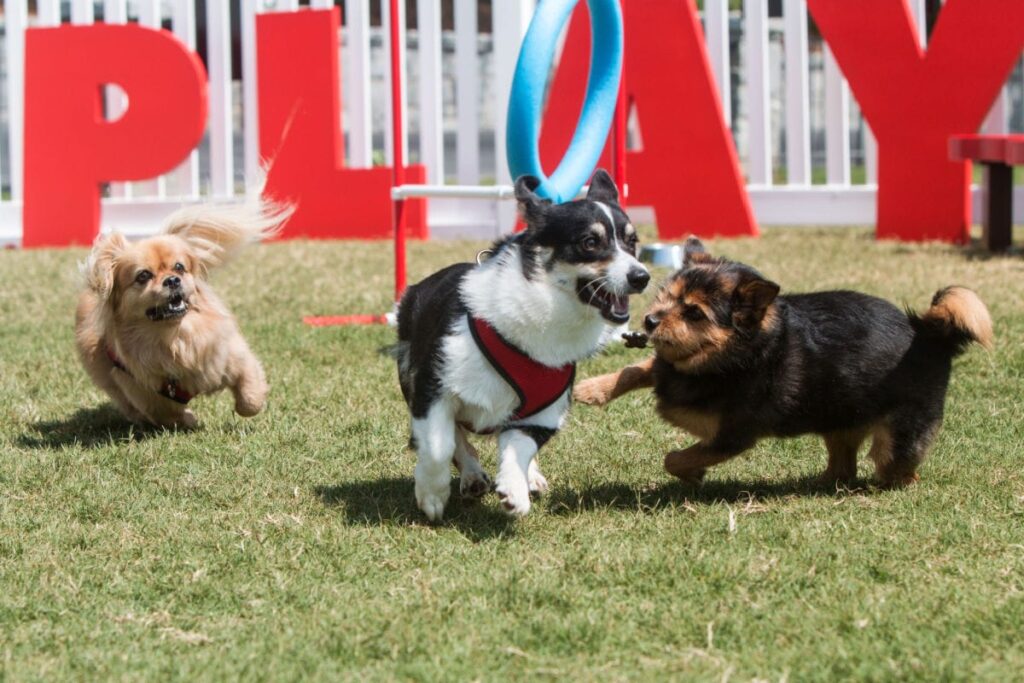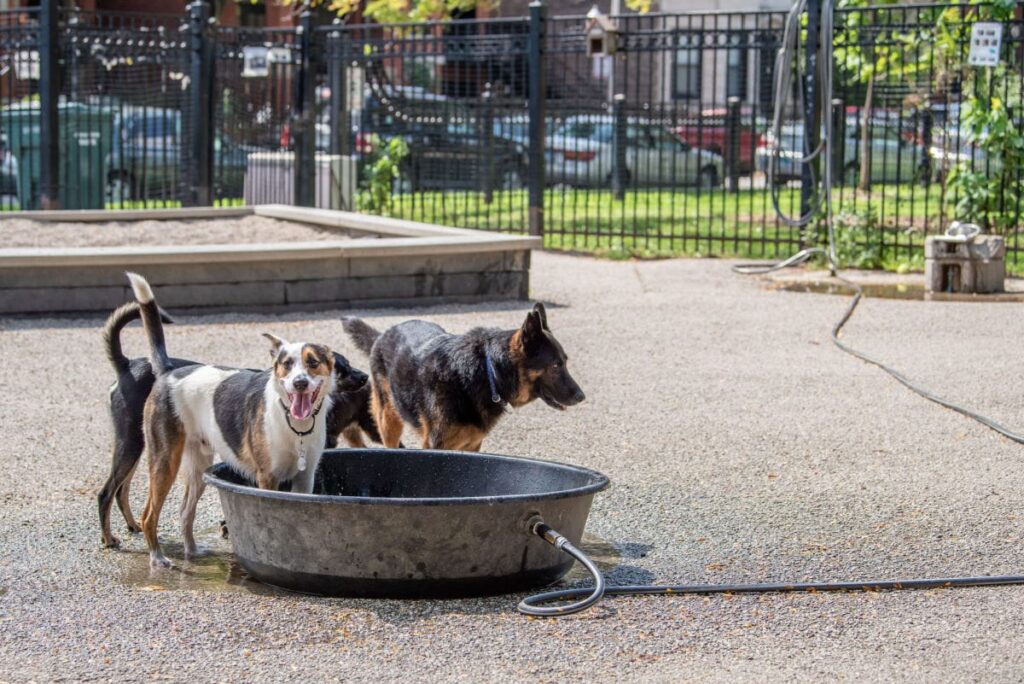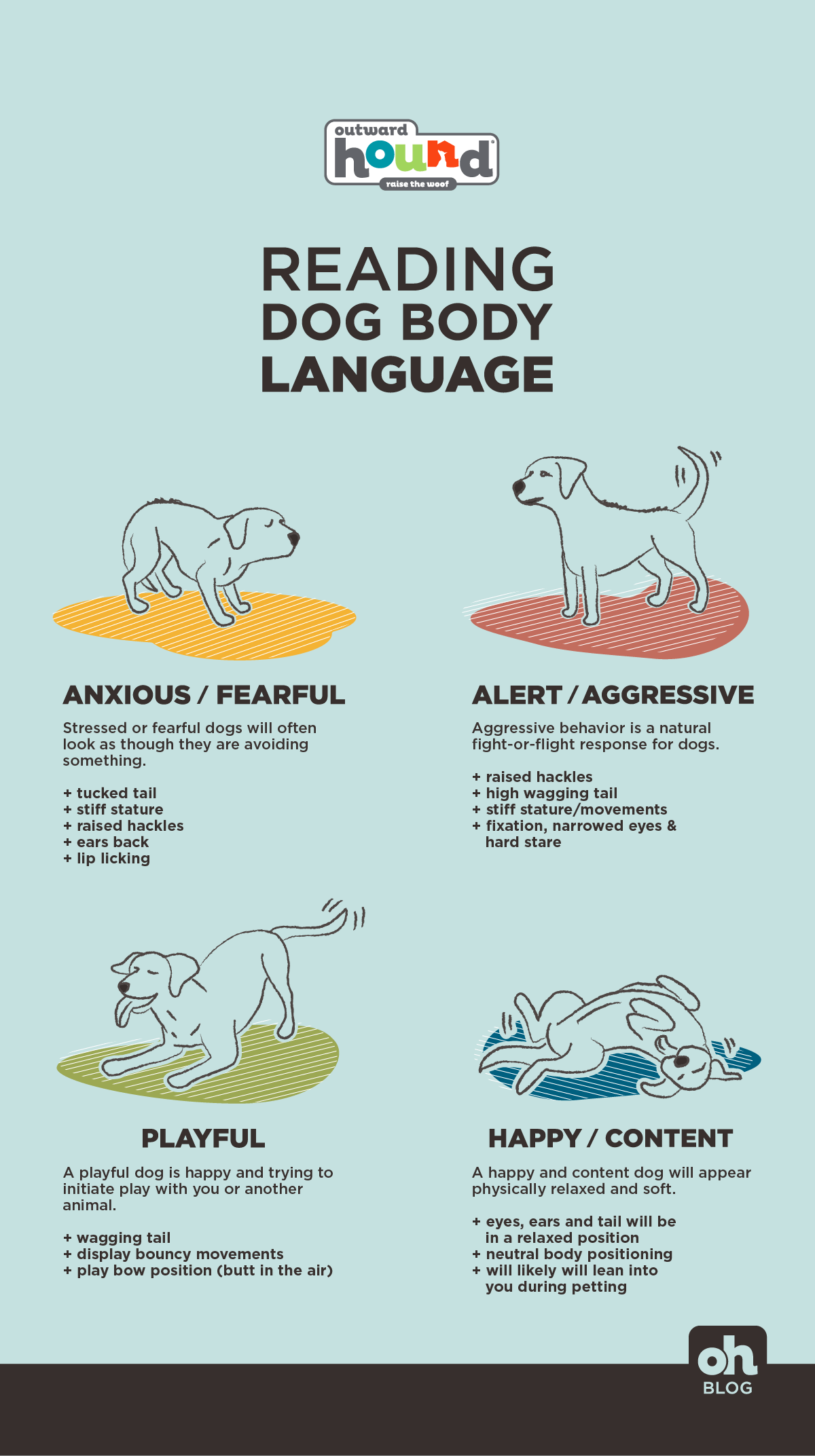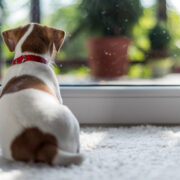We all want to see our dog play with a happy, wagging tail and fellow dog owners who are relaxed and smiling at the dog park. Here’s how you and your pup can help make it a positive experience for all!
Proper etiquette in public spaces designated for dogs is important for a few reasons. It keeps other park-goers and their pups glad to see you make sure that these spaces are maintained for pet parents and their furry friends to run, jump, and play, and most importantly makes sure your dog is ready for good behavior expected at dog parks.
So what is the expected dog park behavior? If you’re a new dog parent or simply new to bringing your four-legged friend to public dog parks, here’s what you should know about good manners before you bust down the double gates with Fido.
General Rules of Dog Park Etiquette At Local Dog Parks

Most dog parks open to the public have a set of rules intended to keep both dogs and dog owners safe and ensure a good time for all.
Some of the most common dog park rules include:
- Requiring dogs to be up to date on vaccinations and licenses
- Requiring dogs to wear a collar with identification tags
- Animals other than dogs aren’t typically allowed in pooch-designated parks
- Dog owners or handlers must be at least 16 years old or accompanied by an adult
- Dogs who are barking excessively loudly, aggressive dogs, or dogs exhibiting dangerous behavior must be removed from the dog park by their owners
- Always supervise
- Keep dog poop bags handy and always pick up after your pup
Some dog parks also have rules about dogs who have not been spayed or neutered or female dogs in heat. Always check the rules and regulations for parks you plan on visiting to be sure your doggie meets the requirements.
Make Sure Your Dog Is Ready For Socialization
Big dogs and small dogs sometimes don’t make the best play dates because of their difference in size. Smaller dogs can also run out of energy a lot faster than larger dogs, making it harder for them to keep up, and trust us — they’ll keep trying!
As much as different-sized pooches may want to play, pay attention to be sure the excitement doesn’t get the best of their energy.
Know When To Take A Break
If another dog starts exhibiting aggressive behavior, the fastest and easiest way to keep you and your dog safe is to remove them from the situation in order to avoid a dog fight.
This is an instance where good recall is essential to have to be able to stop a dog fight before it begins. If your own dog becomes increasingly withdrawn or aggressive, they’re indicating they don’t feel comfortable and it’s time to take a break.
Ask About Going Off Leash
Even a good dog can lose their cool when they’re let off the leash. Most dog parks have a fenced-in off-leash area specifically intended to let pups run free safely.
Other than these designated off-leash spots, it’s considered polite and respectful of other dogs and dog owners to ask before letting your own dog off-leash — especially if other dogs in the vicinity are on a leash or there are small children around.
Dog Park Etiquette: 5 Tips For Introducing Your Dog To Public Dog Parks

1. Start Slowly
Introduce your dog to public dog parks slowly. Practice commands and following them off-leash at home before letting your pup loose at the dog park, then take shorter trips to the dog park where you can focus on building up those skills and good behavior in a setting with more potential distractions.
2. Establish Solid Recall
The ability to be able to call your dog back to you is important for safety in public, off-leash situations. Establishing a reliable response from your dog when you call them will keep them safe and listening to your directions and give you peace of mind should you need to call them away from a dangerous situation quickly.
3. Use Positive Reinforcement
Encourage your dog’s good dog park behavior! Positive reinforcement is one of the most powerful tools you can use when training and teaching your dog new things. Verbal praise, yummy treats, or favorite outdoor toys are the perfect incentive to help shape your dog’s behavior.
4. Pay Attention To Your Dog’s Body Language

Sometimes being at a park with a bunch of other dogs around can be a little overwhelming, especially for smaller dogs or pups who aren’t used to being around large dogs, or for dogs who are shy and tend to be a little more people-oriented.
If your dog is visibly uncomfortable, consider trying again on another day at a less busy time, or finding a dog park alternative until you’ve had some more practice. Not all dogs are suited for a dog park environment, and that’s OK.
5. Have Patience
Don’t expect perfection right away. Your dog is still learning! It may take several trips to the dog park before they fully understand what’s expected of them. Always reward the behavior you want your dog to continue with!
What To Pack For a Trip To The Dog Park

- Your Dog’s Leash
- Your Own Water Bowl
- Clean Drinking Water
- Dog Toys & treats
- Dog poop bags for waste
Many dog parks have community water bowls, but unfortunately, you never know when these can be a breeding ground for infections like kennel cough. Some dog parks even have access to water for swimming, but swimming water isn’t always safe for drinking, either. Keeping your own collapsible bowl handy at the dog park is easy enough to do to ensure your dog is getting clean water.
If you’d feel better about your dog drinking from their own water bowl, there’s nothing wrong with packing one to bring with you. Plus, this way you’ll have it handy wherever you wander in the park!
Dog toys not only provide the perfect activity to enjoy playing with your pup at the park, but they can also help your dog stay focused on you and the game and less likely to become distracted by other dogs.

